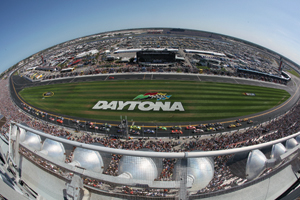As regular readers of this publication, you know that our industry is in the early adoption phase of leveraging new telecommunication technologies. If history is a reasonable guide, these changes will manifest themselves with remarkable immediacy. When applied properly, these new technologies provide a wealth of benefits to facilities and help clubs elevate their fan experience, increase revenue and improve building operations.
Whether it’s social media trends among fans, mobile applications to help spectators find their way around facilities or handheld devices that offer event highlights, we are moving faster and faster toward a new electronic reality in sports venues of all types. Teams and sponsors recognize there is value in leveraging these emerging technologies.
A growing and more youthful fan base relies on their smartphones, and now tablets, at a frequency of use we never could have imagined three years ago. Today, fans expect to be able to complete standard voice calls, texts, sharing of pictures and enjoy high-speed Internet access everywhere — including stadiums, arenas and racetracks. The legacy cellular and IT systems installed in existing facilities are no longer sufficient to support this demand.
 |
GETTY IMAGES
Daytona’s smartphone app, which was tested this summer, helped fans navigate the speedway. |
However, with upgraded Wi-Fi and cellular networks in place, venues will be able to serve fan bases with an infinite amount of new, targeted experiences. Proprietary closed-venue applications (venue-specific apps), similar to the one currently being tested at Daytona International Speedway, will be downloaded by fans and installed on their personal devices. This will allow facility operators to efficiently stream video and data directly to each fan’s device. Opportunities that become possible if using a closed-venue app include:
• Video streaming of unique program content.
• A direct pipeline to interact with team and sponsor marketing objectives.
• Fan ability to view out-of-market or highlights from other games.
• Greater viewing of replays.
• Views from specialty cameras, including in-car and cable cams.
• Direct link to food concessions with pick up at the selected stand.
• Ability to order from the team store for delivery to seat.
• Facility navigation tools for way-finding and egress.
• Direct messaging to fans by operations staff in case of an emergency.
Obviously, these opportunities aren’t realized without a substantial investment in infrastructure. In a struggling economy, no organization welcomes significant capital expenditure. Realistically though, teams and sponsors will discover this is a reasonable investment given the potential return, particularly considering heightened fan expectations.
The newest venues, including Cowboys Stadium, Livestrong Sporting Park, MetLife Stadium and Amway Center, were constructed with these systems already in place. Given the explosive speed at which new technologies are embraced once proven, we anticipate retrofits to existing arenas and stadiums will become commonplace at a remarkable pace.
Cellular carriers, all of which have significant investments in sports facility partnerships, are highly motivated to assist teams in this implementation. Equipment providers, too, have advanced the state of the art and have already completed installations online.
Changes to existing facilities include installation of cellular distributed antenna systems (DAS), high-density Wi-Fi, optical carrier class connectivity to the Internet along with the necessary upgrade of network switches, and a backbone of fiber optic cabling to join it all together. Finally, a skilled team consisting of the facilities media director, IT director, team and ownership representatives, marketing personnel, and consultants working in a collaborative manner is critical to the success of the project.
Many other returns will come from making these investments; almost every electronic system in a facility will benefit from upgrades of a building’s shared telecommunications and data systems. This will enable facilities for the future, allowing them to embrace new technologies including electronic wallets, Internet protocol TV distributed television, IP-based security, energy controls and many others without having to constantly upgrade the respective system’s infrastructure.
A variety of revenue-generating scenarios is available to organizations that embrace these improvements. By creating new ad inventory, teams can extend existing traditional sponsorships, create new ones within the fan social networking framework, and even create revenue by leasing a portion of the installed infrastructure to the non-sponsoring carriers.
Many industry professionals believe leagues will embrace these improvements and may soon mandate them. This will create demands for most venues to be current in as little as three years. Teams and facilities will have to immediately begin the strategic planning to prepare for these technologies and their effective management.
With fans expecting to use their phones in high-density environments like those found at sports venues, teams and facility personnel will find themselves addressing the infrastructure question sooner rather than later. Fortunately, many revenue-generating opportunities and operational benefits accompany these improvements once implemented, in addition to addressing critical fan expectations.
Daniel Abelson (abelsond@igscompany.com) is a consultant who provided design management and coordination of the technology during construction of the newly renamed MetLife Stadium.





